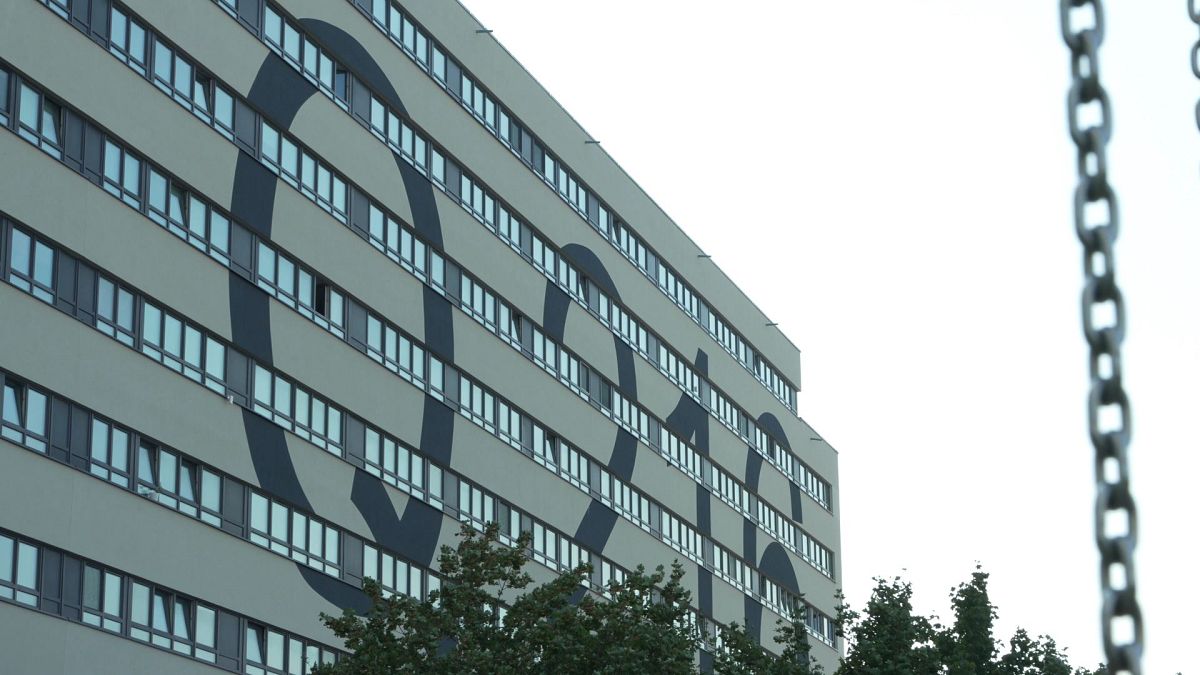In an effort to combat the housing crises plaguing Europe, two German entrepreneurs have been converting old factories and disused office spaces into affordable apartments in Berlin for the past 15 years. With rents skyrocketing and bureaucratic hurdles hindering new construction, Lutz Lakomski and Arndt Ulrich have taken on unique projects such as a former sweets factory, a department store, and the abandoned offices of the former East German railway company. Their passion for revitalizing forgotten spaces has not only provided housing solutions but also breathed new life into these historical buildings.
The duo’s journey into residential housing began when they discovered that they could not demolish an old office building they had intended to make way for commercial spaces. Instead, they decided to convert it into apartments, ultimately housing around 400 people. In their subsequent projects, including the transformation of an empty department store into 86 apartments, Lakomski and Ulrich faced challenges such as fire safety regulations, building contamination, and ensuring the building’s compliance with modern energy standards. Despite the obstacles, their meticulous attention to detail and commitment to providing quality living spaces have earned them praise from tenants who appreciate the care that went into creating their homes.
One of the major advantages of converting old office buildings into apartments is the speed at which these projects can be completed. Since the basic framework already exists, the focus can be more on modernization and customization, allowing for quicker occupancy and reduced construction time. Additionally, the surplus parking spaces associated with office buildings can be repurposed into green spaces, enhancing the overall quality of life for residents. While Lakomski and Ulrich primarily cater to students with their smaller-sized apartments, the adaptability of these conversions can appeal to a broader demographic seeking affordable housing options in urban areas.
Despite the success of their projects in Berlin, the entrepreneurs are cautious about converting buildings into apartments in central city locations where real estate prices are exorbitant. They emphasize the importance of government support in providing affordable land prices and incentives for municipal housing companies to invest in social housing projects. While private investors like Lakomski and Ulrich are willing to fill this gap, they stress the need for cities to streamline bureaucratic processes and prioritize housing construction as a key agenda. By creating a conducive environment for developers and investors, cities can accelerate the pace of affordable housing solutions.
In light of the ongoing debates surrounding expropriation and rent caps, Lakomski and Ulrich highlight the need for stability and predictability in the investment landscape. Investors, especially private ones, require long-term planning security to commit to housing projects. The constant delays in infrastructure plans due to bureaucratic hurdles can deter potential investors and stall the progress towards addressing the housing crises. Both entrepreneurs urge city leaders to take personal responsibility and drive the agenda for housing construction, ensuring that decisions are made efficiently and effectively to meet the growing demand for affordable housing in urban areas.
While Lakomski and Ulrich do not have immediate plans for more apartment conversions in Berlin, they have upcoming projects in Koblenz, a city in western Germany. Their success in repurposing old spaces into vibrant residential communities serves as a testament to the viability of creative solutions in addressing housing challenges. By harnessing the potential of underutilized buildings and fostering collaboration between governments, developers, and investors, cities can pave the way for sustainable and inclusive housing solutions that benefit residents across Europe.











